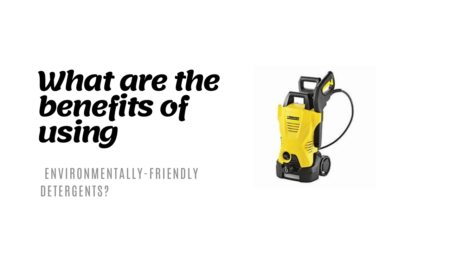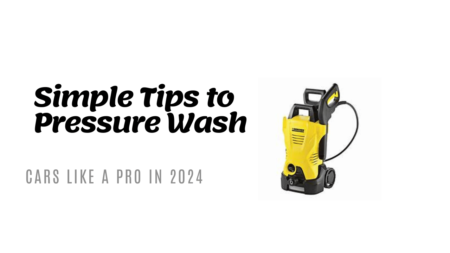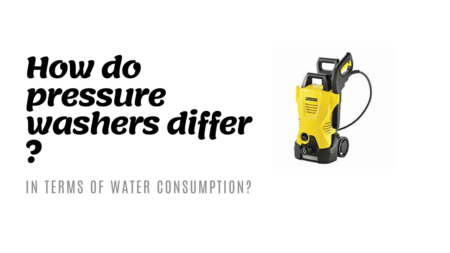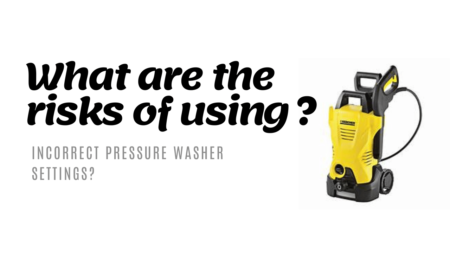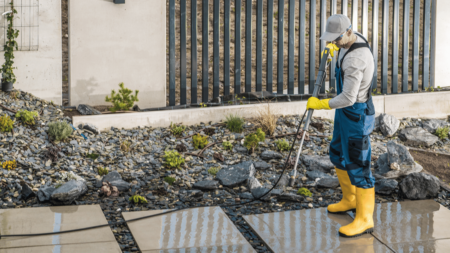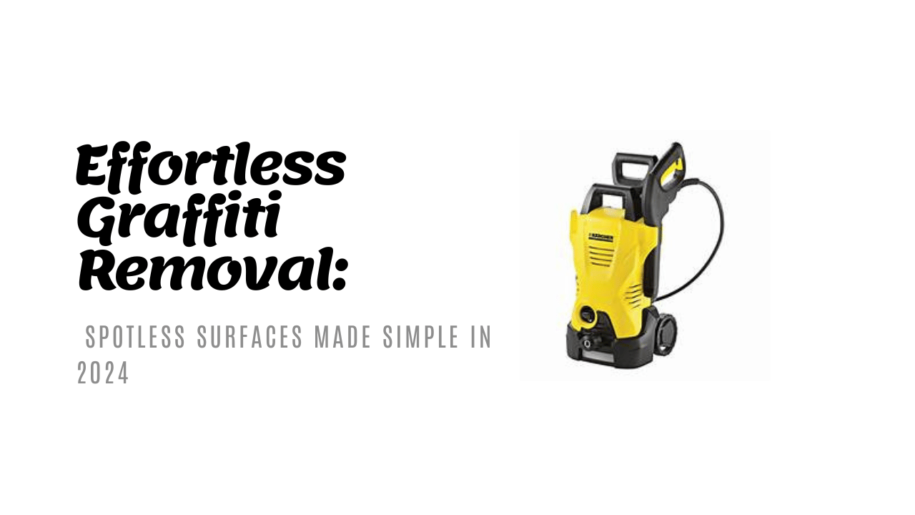
Got an unsightly tag on your property? Graffiti can deface walls and surfaces, making your space look neglected. But don’t worry, removing graffiti isn’t as tough as it seems. In this post, you’ll learn about various methods to effectively erase graffiti, including pressure washing, sandblasting, and chemical removers.
Whether you’re dealing with brick, concrete, or metal, there’s a technique that will work for you. Let’s dive in and reclaim your clean surfaces.
Understanding Graffiti Removal Techniques
Graffiti removal techniques are essential for maintaining the aesthetic appeal of surfaces and buildings. Different methods can be employed to effectively eliminate unwanted graffiti. Let’s explore some common techniques used for graffiti removal.
Pressure Washing as a Primary Technique
One of the primary techniques for graffiti removal is pressure washing. Using high-pressure water streams, pressure washing can efficiently remove graffiti from various surfaces like concrete, brick, and metal. The force of the water helps break down the paint or markings, making it easier to clean off the surface.
Benefits of Pressure Washing:
- Quick and efficient removal of graffiti.
- Can be used on a wide range of surfaces.
- Environmentally friendly as it often requires only water.
- Cost-effective compared to other methods.
Safety Precautions:
- Wear protective gear such as goggles and gloves.
- Use appropriate pressure levels to avoid damage to surfaces.
- Ensure proper training before operating pressure washing equipment.
 Photo by Elsie Soto
Photo by Elsie Soto
Chemical Paint Strippers and Graffiti Removers
For more stubborn graffiti or delicate surfaces, chemical paint strippers and specialized graffiti removers can be highly effective. These products are designed to dissolve the paint or ink used in graffiti, making it easier to wipe off the surface without causing damage.
Effectiveness of Chemical Removers:
- Works well on surfaces where water pressure might not be suitable.
- Can target specific types of paints or inks for better removal.
- Requires proper ventilation and safety measures during application.
Mechanical Methods: Sandblasting and Dry Ice Blasting
Mechanical methods like sandblasting and dry ice blasting involve using abrasive materials or particles to remove graffiti. Sandblasting uses sand or other abrasives propelled by compressed air, while dry ice blasting uses solid carbon dioxide pellets to blast off the graffiti.
Benefits of Mechanical Methods:
- Effective for tough graffiti on hard surfaces.
- Can remove multiple layers of paint in one go.
- Minimal residue left behind after the process.
These graffiti removal techniques offer versatile solutions for different types of graffiti and surfaces. Choosing the right method depends on factors like the surface material, type of graffiti, and environmental considerations. As a pressure washer user, understanding these techniques can help you enhance your graffiti removal skills effectively.
For more information on graffiti removal techniques, you can visit here, here, and here.
Best Practices for Graffiti Removal
Graffiti removal requires the right techniques to effectively eliminate unwanted marks while preserving the integrity of the surfaces. Follow these best practices to ensure successful graffiti removal.
Identifying the Surface Material
Before embarking on graffiti removal, it is crucial to identify the material of the surface. Different surfaces, such as concrete, brick, wood, or metal, may require specific removal methods to prevent damage. Conduct a simple test by applying a small amount of the chosen removal solution in an inconspicuous area to determine its effectiveness and ensure it does not cause any harm to the surface.
Testing in a Small Area First
One of the essential steps in graffiti removal is testing the chosen removal method in a small, discreet area. This test patch allows you to assess how the surface will react to the removal solution without causing widespread damage. By conducting a test first, you can determine the effectiveness of the removal technique and adjust as needed before proceeding with the full-scale removal process.
Protective Gear and Safety Measures
When engaging in graffiti removal activities, it is vital to prioritize safety. Wear appropriate protective gear such as gloves, goggles, and masks to protect yourself from harmful chemicals and fumes. Ensure proper ventilation in the area where removal is taking place and follow safety guidelines for handling graffiti removal products. Safety should always be the top priority to prevent accidents and injuries during the removal process.
Remember, proper preparation and caution can lead to successful graffiti removal without compromising the integrity of the surfaces. By following these best practices, you can effectively remove graffiti while ensuring safety and protecting the surrounding environment.
 Photo by Ant A
Photo by Ant A
Prevention Strategies After Removal
After successfully removing graffiti, it’s crucial to implement prevention strategies to deter future vandalism. Here are effective methods to safeguard against graffiti attacks:
Anti-Graffiti Coatings
Applying anti-graffiti coatings is a proactive approach to protecting surfaces from graffiti damage. These coatings form a protective barrier that makes it easier to remove graffiti, discouraging vandals from defacing property. By investing in anti-graffiti coatings, surfaces become less appealing for graffiti artists, contributing to a cleaner environment overall.
To learn more about the benefits of anti-graffiti coatings, you can explore this resource.
Community Involvement in Prevention
Community involvement plays a pivotal role in preventing graffiti vandalism. By engaging residents and businesses in the area, a sense of collective responsibility is fostered. Creating awareness about the impact of graffiti and encouraging quick reporting of incidents can deter vandals.
When communities come together to combat graffiti, they send a clear message that such behavior will not be tolerated, leading to a decrease in graffiti activity.
For additional insights on community involvement in graffiti prevention, you can refer to this link.
 Photo by XU CHEN
Photo by XU CHEN
DIY Graffiti Removal Tips
Graffiti can be an eyesore, but with a few DIY methods using household items, you can tackle the issue effectively. Here are some simple home remedies for graffiti removal that you can try:
Simple Home Remedies for Graffiti Removal
- Vinegar Solution: Mix equal parts of white vinegar and water. Apply the solution to the graffiti-covered area and let it sit for a few minutes. Scrub the surface with a brush or cloth to remove the graffiti.
- Baking Soda Paste: Create a paste using baking soda and water. Apply the paste to the graffiti and let it sit for about 30 minutes. Scrub the area gently with a brush or sponge until the graffiti is lifted.
- Lemon Juice: Lemon juice can be effective in removing graffiti from certain surfaces. Apply fresh lemon juice directly to the graffiti and let it sit for a while before scrubbing it off.
These simple DIY methods using everyday household items can help you combat graffiti without harsh chemicals.
Choosing the Right Pressure Washer for Graffiti Removal
When it comes to removing graffiti with a pressure washer, choosing the right equipment is crucial for efficient and safe cleaning. Here are some tips on selecting the appropriate pressure washer:
- Pressure Level: Consider the pressure level of the pressure washer. Lower pressure washers are ideal for delicate surfaces to avoid damage, while higher pressure washers are more suitable for tougher stains.
- Water Flow: Look for a pressure washer with a good water flow rate. A higher flow rate can help wash away graffiti more effectively.
- Nozzle Type: Different nozzles have varying spray patterns. For graffiti removal, a narrow spray pattern works best to target the specific area without causing damage to surrounding surfaces.
By choosing the right pressure washer and following these tips, you can efficiently remove graffiti from different surfaces while ensuring the safety of the underlying material.
Photo by Elsie Soto 
Conclusion
Congratulations on reaching the end of this informative guide on graffiti removal techniques! You’ve learned various effective methods to tackle unwanted graffiti, from using pressure washers to applying eco-friendly solvents. Remember, quick action is key to successful graffiti removal to prevent further vandalism and keep your surroundings clean and attractive.
By employing the right tools and techniques, you can maintain the pristine appearance of your property while contributing to a graffiti-free community. Whether you’re a homeowner, business owner, or professional cleaner, these strategies will help you combat graffiti effectively and efficiently.
Now that you’re equipped with the knowledge and tools to combat graffiti, go ahead and put these techniques into practice. Don’t let graffiti detract from the beauty of your surroundings – take action and remove it promptly using the methods outlined in this guide.
If you ever encounter stubborn graffiti in the future, refer back to this resource for effective solutions. Remember, persistence and the right approach can make all the difference in achieving a graffiti-free environment. Stay proactive and keep your spaces clean and welcoming for everyone to enjoy.
Feel empowered to take on the challenge of graffiti removal with confidence, knowing that you have the expertise to handle it effectively. Thank you for reading, and best of luck in your graffiti removal efforts!
 Photo by Ant A
Photo by Ant A
![Top 5 Pressure Washer Accessories You Didn’t Know You Needed [Updated 2024]](https://pressurwasher.com/wp-content/uploads/2024/06/Minimalist-Tutorial-Event-YouTube-Thumbnail-2024-06-03T215409.851-450x253.png)
